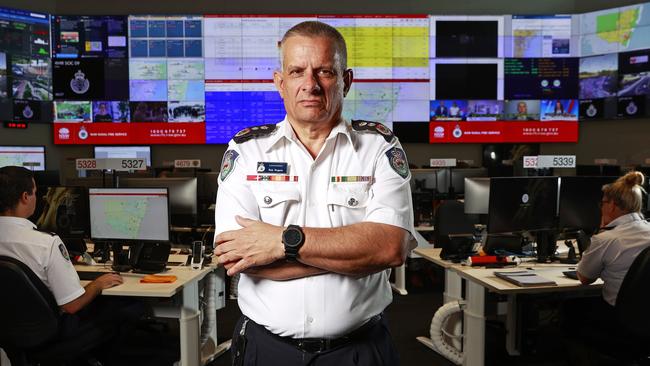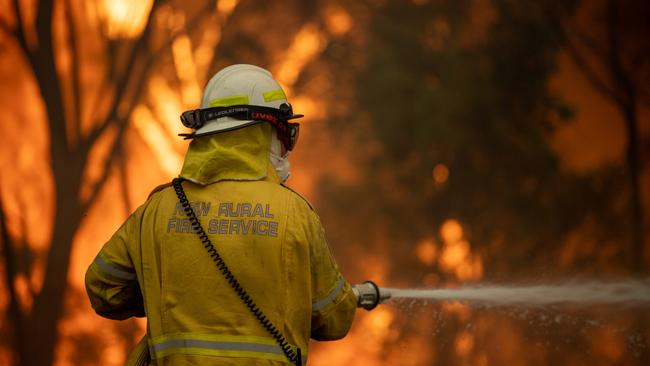Bushfire risk skyrockets as La Ninas spur thick plant growth and prevent hazard reduction
The race is on to protect NSW from devastating blazes as authorities warn a rare hat-trick of La Ninas have created a perfect storm of bushfire risk.
NSW
Don't miss out on the headlines from NSW. Followed categories will be added to My News.
The race is on to protect thousands of residents from devastating blazes amid warnings from authorities that a rare hat-trick of La Ninas could create a perfect storm of bushfire risk across NSW before the end of the year.
Rural Fire Service Commissioner Rob Rogers told The Daily Telegraph a frenzied work schedule, including hazard reduction burns, fire-trail clearing and property inspections was under way ahead of next summer, as the spectre of mass bushfires fuelled by three soggy summers looms.
Three regions across NSW were hit with total fire bans on Thursday, highlighting the weather change already under way.
“You can already feel the shift from that prolonged rain into … warmer days,” Mr Rogers said.
He also warned that thick plant growth across NSW would stretch RFS resources as the emergency service organisation faces fire battles ranging from Broken Hill to the coast in the next two years.

“I’ve got to say I can’t ever recall the grass being so prolific in western NSW in my career,” he said, adding that bush damaged in Black Summer had already regrown to worrying levels.
“Normally you’d have about an eight-year period before becoming concerned about them again. They’re growing much quicker than we would have expected … I am quite concerned about the risk in coming years.”

On the same day a scathing Auditor-General’s report slammed the NSW government for hobbling the delivery of bushfire recovery grants, Mr Rogers said the RFS had inspected 2700 communities deemed at risk from blazes.
The race to catch up follows hazard reduction targets being hamstrung over the past two years because of wet weather, with just 56,000ha cleared since July 2021, compared to 176,499ha the year before.
It comes as former Fire and Rescue commissioner Greg Mullins said history pointed to “major bushfires” striking NSW again by the end of the year as La Nina conditions evaporated.
“We’ve been through floods and rain and (people) think ‘we’ll be right’ (with fires). But history tells us we’ve got a very short reprieve — we’ve got eight months and then we’ll be back into it,” he said.
“We’ll get what always happens — the summer after a triple La Nina you get major bushfires in NSW.”
A triple La Nina in the 1950s was followed by the 1957 Blue Mountains bushfires which resulted in 170 homes being destroyed, while in 1977, 49 homes were lost following three La Nina summers in a row. More recently, the Black Christmas bushfires of 2001 came after a similar weather pattern.
“I’m quite worried, it’s a very clear trend — immediately after triple La Nina you get major bushfires in NSW. It’s immediate because the weather patterns just swing back to dry and hot,” Mr Mullins said.
He added that NSW could be fighting blazes within by November this year.
Andrew Constance, the former Bega MP who previously said it was a “national bloody shame” that more hadn’t been done by the government to prepare for fires, said it was right to describe the next few months as a race.
“The bulldozers have got to go in and get the trails open ASAP,” he said.
“The fuel load is excessive because of La Nina — and a couple of days of hot north-westers (winds), we’re in real trouble.”
Got a news tip? Email lachlan.leeming@news.com.au





